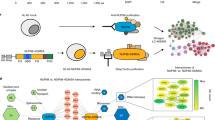Abstract
A relationship was found between the amino acid (AA) composition, intrinsic protein disorder (IPD) and protein binding regions (PBRs) of the functional regions of Ewing’s sarcoma protein (EWS) and oncogenic EWS fusion proteins (EFPs). EWS has high IPD and 64% predicted disordered binding regions (DBRs) by ANCHOR. The native transcription factors, fused to EWS activation domain (EAD) in EFPs, show high DBRs in N-terminal domain and relatively low in C-terminal domain. EFPs oncogenic function is related to IPD and PBRs probabilities, high around breakpoint and decreased in the fused transcription factor. The increased IPD in EAD around (AA 82), and the small RBRs around (AAs (50–60) and 100) are consistent with the reported physical interactions with RNA polymerase II subunits. The AAs (228–264) of EWS, interacting with ZFM1 (SF1), correspond to two peaks of DBRs by Anchor and high IPD by IUPred. The IQ domain of EAD (AAs 258–280) that is phosphorylated by PKC and interacts with calmodulin, has high IPD and DBRs probability. The Ser266, conserved site of PKC phosphorylation, is situated in DBR and IPD region with about 100% probability. The small PBRs found in the EAD correspond to important physical protein-protein interactions, confirmed by experimental data. Thus regions of EWS and EFPs, included in functional interactions with other partners, are enriched of protein binding regions by ANCHOR. The development of IPD- and PBRs-related, EWS-FLI1-directed specific therapies will help the design of antitumor agents against ESFTs because of high patient mortality in cases of metastatic disease.
Similar content being viewed by others
Abbreviations
- EWS:
-
Ewing’s sarcoma protein
- CTD, NTD:
-
C- and N-terminal domain
- ID:
-
intrinsic disorder
- ISD:
-
intrinsic structural disorder
- IPD:
-
intrinsic protein disorder
- IDPs:
-
intrinsically disordered proteins
- DBRs:
-
disordered binding regions
- EAD:
-
EWS activation domain
- AA:
-
amino acid
- TAD:
-
transcription activation domain
- PBR:
-
protein binding regions
- Pol II:
-
RNA polymerase II
- TF:
-
transcription factor
- ESFT:
-
Ewing’s sarcoma family of tumors
References
Huang, Y.Q. and Liu, Z.R., Acta Physico-Chimica Sinica, 2010, vol. 26, no. 8, pp. 2061–2072.
Obradovic, Z.,. Peng, K., Vucetic, S., Radivojac, P., Brown, C.J, and Dunker, A.K., Proteins, 2003, vol. 53, suppl. 6, pp. 566–572.
Hegyi, H., Buday, L., and Tompa, P., PLoS Comput. Biol., 2009, vol. 5, no. 10, p. e1000552. doi:10.1371/ journal.pcbi.1000552
Dosztanyi, Z., Csizmok, V., Tompa, P., and Simon, I., Bioinformatics, 2005, vol. 21, no. 16, pp. 3433–3434.
Linding, R., Russell, R.B., Neduva, V., and Gibson, T.J., Nucleic Acids Res., 2003, vol. 31, no. 13, pp. 3701–3708.
Linding, R., Jensen, L.J., Diella, F., Bork, P., Gibson, T.J., and Russell, R.B., Structure, 2003, vol. 11, no. 11, pp. 1453–1459.
Prilusky, J., Felder, C.E., Zeev-Ben-Mordehai, T., Rydberg, E.H., Man, O., Beckmann, J.S., Silman, I., and Sussman, J.L., Bioinformatics, 2005, vol. 21, no. 16, pp. 3435–3438.
Yang, Z.R., Thomson, R., McNeil, P., and Esnouf, R.M., Bioinformatics, 2005, vol. 21, no. 16, pp. 3369–3376.
Xue, B., Dunbrack, R.L., Williams, R.W., Dunker, A.K., and Uversky, V.N., Biochim. Biophys. Acta, 2010, vol. 1804, no. 4, pp. 996–1010.
Dosztanyi, Z., Mészéros, B., and Simon, I., Bioinformatics, 2009, vol. 25, no. 20, pp. 2745–2746.
Pan, S., Ming, KY., Dunn, T.A., Li, KK., and Lee, K.A., Oncogene, 1998, vol. 16, no. 12, pp. 1625–1631.
Todorova, R., Mol. Biol. Rep., 2009, vol. 36, pp. 1269–1274.
Bertolotti, A., Melot, T., Acker, J., Vigneron, M., Dellatre, O., and Tora, L., Mol. Cell Biol., 1998, vol. 18, pp. 1489–1497.
Petermann, R., Mossier, B.M., Aryee, D.N.T., Khazak, V. Golemis, E.A., and Kovar, H., Oncogene, 1998, vol. 17, pp. 603–610, 1998.
Zhou, H., and Lee, K.A.W., Oncogene, 2001, vol. 20, pp. 1519–1524.
Zhang, D., Paley, A.J., and Childs, G., J. Biol. Chem., 1998, vol. 273, pp. 18086–18091.
Bachmaier, R., Aryee, D.N.T., Jug, G., Kauer, M., Kreppel, M., Lee, K.A., and Kovar, H., Oncogene, 2009, vol. 28, pp. 1280–1284.
Deloulme, J.C., Prichard, L., Delattre, O., and Storm, D.R., J. Biol. Chem., 1997, vol. 272, no. 43, pp. 27369–27377.
Erkizan, H.V., Uversky, V.N., and Toretsky, J.A., Clin. Cancer Res., 2010, vol. 16, no. 16, pp. 4077–4083.
Li, K.K., and Lee, K.A., J. Biol. Chem., 2000, vol. 275, pp. 23053–23058.
Todorova, R., Adv. Biosci. Biotechnol., 2012, vol., 3, Ng, K.P., Potikyan, G., Savene, R.O.V., Denny, C.T., Uversky, V.N., and Lee, K.A.W., Proc. Natl. Acad. Sci. USA, 2007, vol. 104, pp. 479–484.
Ng, K.P., Potikyan, G., Savene, R.O.V., Denny, C.T., Uversky, V.N., and Lee, K.A.W., Proc. Natl. Acad. Sci. USA, 2007, vol. 104, pp. 479–484.
Lee, K.A., Adv. Exp. Med. Biol., 2012, vol. 725, pp. 106–125.
Pajkos, M., Mészéros, B., Simon, I., and Dosztanyi, Z., Mol. BioSystems, 2012, vol. 8, no. 1, pp. 296–307.
Erkizan, H.V., Kong, Y., Merchant, M., Schlottmann, S., Barber-Rotenberg, J.S., Yuan, L., Abaan, O.D., Chou, T.-h, Dakshanamurthy, S., Brown, M.L., Uren, A., and Toretsky, J.A., Nature Med., 2009, vol. 15, no. 7, pp. 750–757.
Dunker, A.K. and Uversky, V.N., Curr. Opin. Pharmacol., 2010, vol. 10, no. 6, pp. 782–788.
Punta, M., Coggill, P.C., Eberhardt, R.Y., Mistry, J., Tate, J., Boursnell, C., Pang, N., Forslund, K., Ceric, G., Clements, J., Heger, A., Holm, L., Sonnhammer, E.L.L., Eddy, S.R., Bateman, A., and Finn, R.D., Nucleic Acids Res. (Database Issue), 2012, vol. 40, pp. D290–D301.
Author information
Authors and Affiliations
Corresponding author
Additional information
The article is published in the original.
Rights and permissions
About this article
Cite this article
Todorova, R. Disordered binding regions of Ewing’s sarcoma fusion proteins. Russ J Bioorg Chem 40, 16–25 (2014). https://doi.org/10.1134/S1068162014010117
Received:
Accepted:
Published:
Issue Date:
DOI: https://doi.org/10.1134/S1068162014010117




